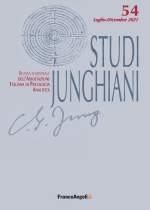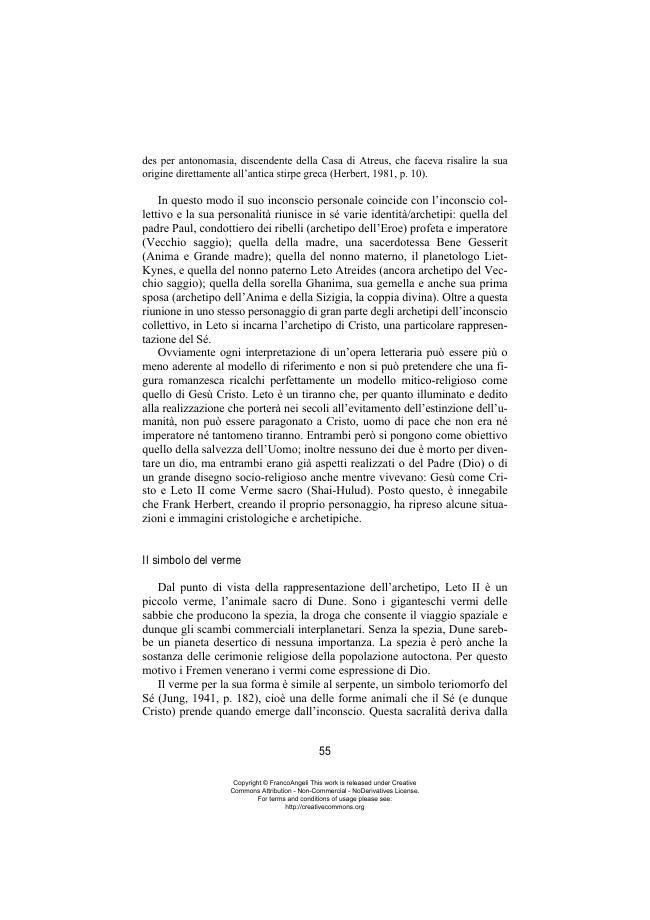L'archetipo di Cristo nella serie Dune di Frank Herbert
P. 44-66
"Nel romanzo L'imperatore-dio di Dune di Frank Herbert il tiranno Leto II lega con un voto di obbedienza la fedele Nayla alla ribelle Siona. Nel finale del romanzo, Nayla contribuirà involontariamente all'uccisione del suo amato imperatore permettendo l'azione della ribelle Siona, e dunque del volere di Leto. C'è in questo legame fra Leto II, Nayla e Siona una predestinazione che ricorda il legame fra Cristo e Giuda. Facendo riferimento ai modelli della psicologia analitica, scopo di questo lavoro è quello di dimostrare come nell'operare di Leto II agisca l'archetipo junghiano di Cristo.
Leto rappresenta, con la sua mostruosa fisicità e con le sue capacità psichiche e divinatorie, tutti i principali archetipi junghiani che si avvicendano nel processo di individuazione: è Ombra (è contemporaneamente il diavolo Shaitan e il dio creatore Shai-Hulud); è Anima (possiede i ricordi della sorella gemella Ghanima, della madre Chani, della nonna Jessica, e può parlare con la loro voce); è syzygia (sposa la sorella Ghanima); è rappresentazione del Sé attraverso l'archetipo di Cristo che, come dice Jung, in quanto eroe e uomo-dio psicologicamente designa il Sé" [Testo dell'editore]
"In the novel God-emperor of Dune by Frank P. Herbert, tyrant Leto II binds his faithful guard Nayla to rebel Siona by a vow of obedience. At the end of the novel, Nayla will inadvertently take part in the killing of her most loved emperor by allowing Siona to act, and thereby fulfilling the will of the god. In this bond between Leto II, Nayla and Siona there is a predestination that recalls the bond between Christ and Judas. By referring to analytical psychology, the aim of this work is to demonstrate how the Jungian archetype of Jesus Christ lies underneath Leto II's way of acting.
Leto, with his monstrous physicality and with his psychic and divinatory skills, represents all the main Jungian archetypes that take turns in the individuation process: he is Shadow (he is at the same time the deviland the creator god); he is Anima (he has the memories of his twin sister Ghanima, his mother Chani, his grandmother Jessica, and can speak with their voice); he is Syzygia (he marries his sister Ghanima); he is a representation of the Self through the archetype of Christ." [Publisher's text]
Ist Teil von
Studi junghiani : rivista semestrale dell'Associazione italiana di Psicologia Analitica : 54, 2, 2021-
Artikel aus derselben Ausgabe (einzeln erhältlich)
-
Informationen
DOI: 10.3280/jun54-2021oa12552
ISSN: 1971-8411
KEYWORDS
- Archetipi, Cristo, Dune, fantascienza, Frank P. Herbert
- Archetypes, Christ, Dune, Frank P. Herbert, Science fiction



